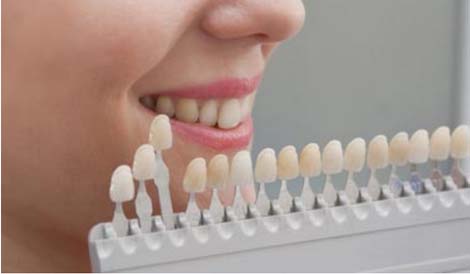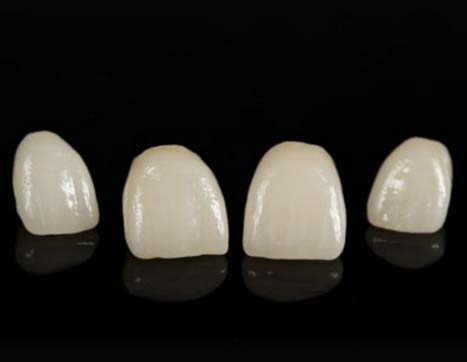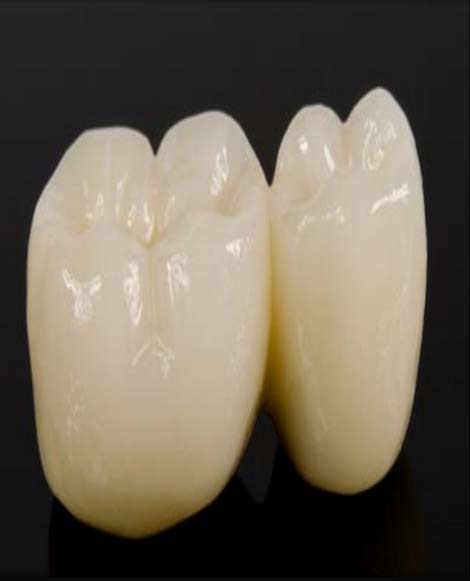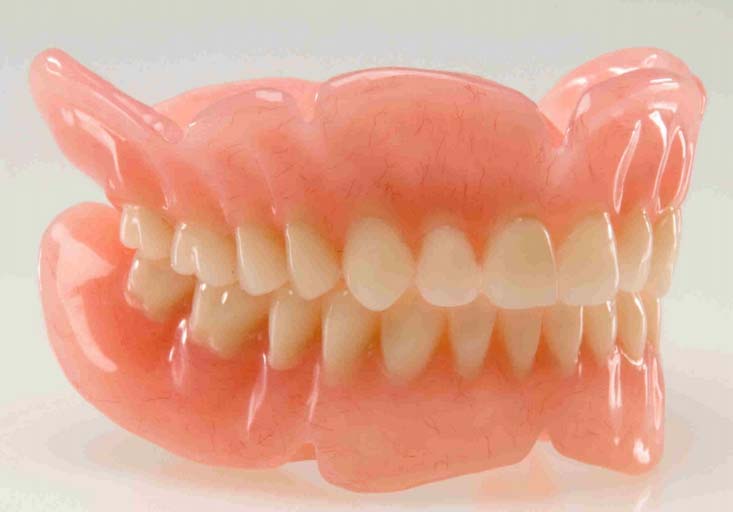Restorative Dentistry Kingsway
Restorative dental treatments today really encompass all the disciplines that dentistry has to offer in an integrated inter-disciplinary approach to achieve optimum dental health function and aesthetics for our patients. That is where our expertise and experience in all aspects of restorative dentistry as well as the other disciplines helps us to achieve the best possible long-term results for our patients.
Teeth colored filling
Teeth colored fillings are Composite fillings also called plastic or white fillings. Getting this kind of filling depends on where the tooth is in your mouth. We bite down hard on our back teeth (molars) so a plastic filling may not be a good choice.
To place this filling your dentist cleans all decay from the tooth and puts a glue (or bonding material) on the inside of the hole. Composite resin is put into the hole in thin layers. Each layer gets hard with the help of a special light that your dentist holds over the tooth. When the last layer of the filling is hard your dentist shapes the filling so it looks and feels natural.
Advantages
These fillings will be the same colour as your natural teeth.They cost less than gold fillings.They are direct fillings so they can be done in one appointment in most cases.
Disdvantages
This kind of filling can break more easily than amalgam or gold fillings.Composite fillings cost more than amalgam fillings but with great esthetic appearance.Recurrent decay is more of a problem than with amalgam or gold fillings.

Dental Crowns
A dental crown is a tooth-shaped “cap” that is placed over a tooth — to cover the tooth to restore its shape and size strength and improve its appearance. The crowns when cemented into place fully encase the entire visible portion of a tooth that lies at and above the gum line
we provide warranted crowns with warranties of 5 years,10 years, 15 years and lifetime warrantied Zirconia based CAD-CAM (Computer aided Designing and Computer aided machining) crowns.
Why Is a Dental Crown Needed?
A dental crown may be needed in the following situations:
To protect a weak tooth (for instance from decay) from breaking or to hold together parts of a cracked toothAbsolutely painless and extremely comfortable.To cover and support a tooth with a large filling when there is not a lot of tooth leftTo hold a dental bridge in place To cover misshapened or severely discolored teethTo cover a dental implantTo make a cosmetic modification
For children a crown may be used on primary (baby) teeth in order to:
Save a tooth that has been so damaged by decay that it can not support a filling.Protect the teeth of a child at high risk for tooth decay especially when a child has difficulty keeping up with daily oral hygiene.Decrease the frequency of sedation and general anesthesia for children unable because of age behavior or medical history to fully cooperate with the requirements of proper dental care. In such cases a pediatric dentist is likely to recommend a stainless steel crown
Types of dental crowns
Provisional crowns that are used on permanent teeth primarily as a temporary measure. The crown protects the tooth or filling while a permanent crown is made from another material. For children a stainless steel crown is commonly used to fit over a primary tooth that is been prepared to fit it. The crown covers the entire tooth and protects it from further decay. When the primary tooth comes out to make room for the permanent tooth the crown comes out naturally with it.
Metals used in crowns include gold alloy other alloys (for example palladium) or a base-metal alloy (for example cobalt or chromium). Compared with other crown types less tooth structure needs to be removed with metal crowns and tooth wear to opposing teeth is kept to a minimum.
Porcelain-fused-to-metal dental crowns can be color matched to your adjacent teeth (unlike the metallic crowns). However more wearing to the opposing teeth occurs with this crown type compared with metal or resin crowns. The crown is porcelain portion can also chip or break off. Next to all-ceramic crowns porcelain-fused-to-metal crowns look most like normal teeth. However sometimes the metal underlying the crown is porcelain can show through as a dark line especially at the gum line and even more so if your gums recede. These crowns can be a good choice for front or back teeth.
All-ceramic or Zitconia dental crowns provide better natural color match than any other crown type and may be more suitable for people with metalallergies. However they are not as strong as porcelain-fused-to-metal crowns and they wear down opposing teeth a little more than metal or resin crowns. All-ceramic crowns are a good choice for front teeth.
Temporary versus permanent- Temporary crowns can be made in your dentist office whereas permanent crowns are made in a dental laboratory. Temporary crowns are made of acrylic or stainless steel and can be used as a temporary restoration until a permanent crown is constructed by a lab

Dental Bridges
Dental bridges literally bridge the gap created by one or more missing teeth.. A bridge is made up of two crowns for the teeth on either side of the gap these two anchoring teeth are called abutment teeth and a false tooth/teeth in between. These false teeth are called pontics and can be made from gold alloys porcelain or a combination of these materials. Dental bridges are supported by natural teeth or implants.
Bridges can
Restore your smileRestore the ability to properly chew and speakMaintain the shape of your faceDistribute the forces in your bite properly by replacing missing teethPrevent remaining teeth from drifting out of position
Procedure for Placing a Dental Bridge
During the first visit for getting a dental bridge the abutment teeth are prepared. Preparation involves recontouring these teeth by removing a portion of enamel to allow room for a crown to be placed over them. Next impressions of the teeth are made which serve as a model from which the bridge pontic and crowns will be made by a dental lab. Your dentist will make a temporary bridge to wear to protect the exposed teeth and gums while the bridge is being made.During the second visit your temporary bridge will be removed and the new permanent bridge will be checked and adjusted as necessary to achieve a proper fit. Multiple visits may be required to check the fit of the metal framework and bite. This is dependent on each individual case. If the dental bridge is a fixed (permanent) bridge your dentist may temporarily cement it in place for a couple of weeks to make sure it is fitting properly. After a couple weeks the bridge is permanently cemented into place.

Dentures
Dentures are removable appliances that can replace missing teeth and help restore your smile. If you have lost all of your natural teeth whether from gum disease tooth decay or injury replacing missing teeth will benefit your appearance and your health. That is because dentures make it easier to eat and speak better than you could without teeth things that people often take for granted.When you lose all of your teeth facial muscles can sag making you look older. Dentures can help fill out the appearance of your face and profile. They can be made to closely resemble your natural teeth so that your appearance does not change much. Dentures may even improve the look of your smile.
Types of dentures
Conventional dentures full mouth dentures This full removable denture is made and placed in your mouth after the remaining teeth are removed and tissues have healed which may take several months.
Partial Dentures
A removable partial denture or bridge usually consists of replacement teeth attached to a pink or gum-colored plastic base which is connected by metal framework that holds the denture in place in the mouth. Partial dentures are used when one or more natural teeth remain in the upper or lower jaw. A fixed (permanent) bridge replaces one or more teeth by placing crowns on the teeth on either side of the space and attaching artificial teeth to them. This “bridge” is then cemented into place. Not only does a partial denture fill in the spaces created by missing teeth it prevents other teeth from changing position. A precision partial denture is removable and has internal attachments rather than clasps that attach to the adjacent crowns. This is a more natural-looking appliance.
Inlays and Onlays
Inlays and onlays are also known as indirect fillings and are useful for repairing slight tooth decay damage. However they are both different and have different uses for different individual cases. Here we will look at the differences between the two. Inlays and onlays as mentioned are both used to repair decay – specifically to fill cavities which are the slight holes on the inside of the teeth (the chewing surface). It is important to fill these to cover up exposed nerves to prevent food from getting stuck and to prevent further decay. Both inlays and onlays are placed in one visit to the dentist and this makes them non-invasive and very rapid solutions. However there will be some associated pain and as such the patient will be given a local anaesthetic and often provided with nitrous oxide and oxygen. The decay on the tooth will also need to be removed before the inlays and onlays are applied. These are not quite as permanent a solution as regular fillings but can last several decades depending on the nature of the case as well as the material used. The materials they can be made from include: gold composite resin ceramics or plastic and they will normally be cemented into the cusps on the top of the teeth.

